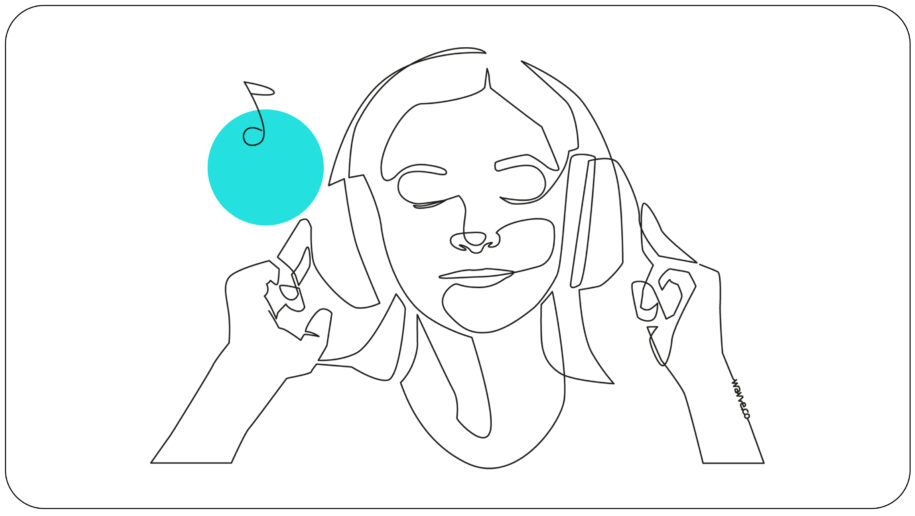It might seem odd to compare graphic design with creating a podcast. The one is completely visual, and the other is completely auditory. But there are things you can definitely learn. And with Wavve, you can create visual content for your podcast, so the two link together.
Designers walk a very fine line in their professional careers. They have to be explosively creative and still restrained to fit into a client’s brief or a target audience’s mindset.
Let’s take a look at some of the lessons you can take from how graphic designers think and work, and apply them to your podcast:
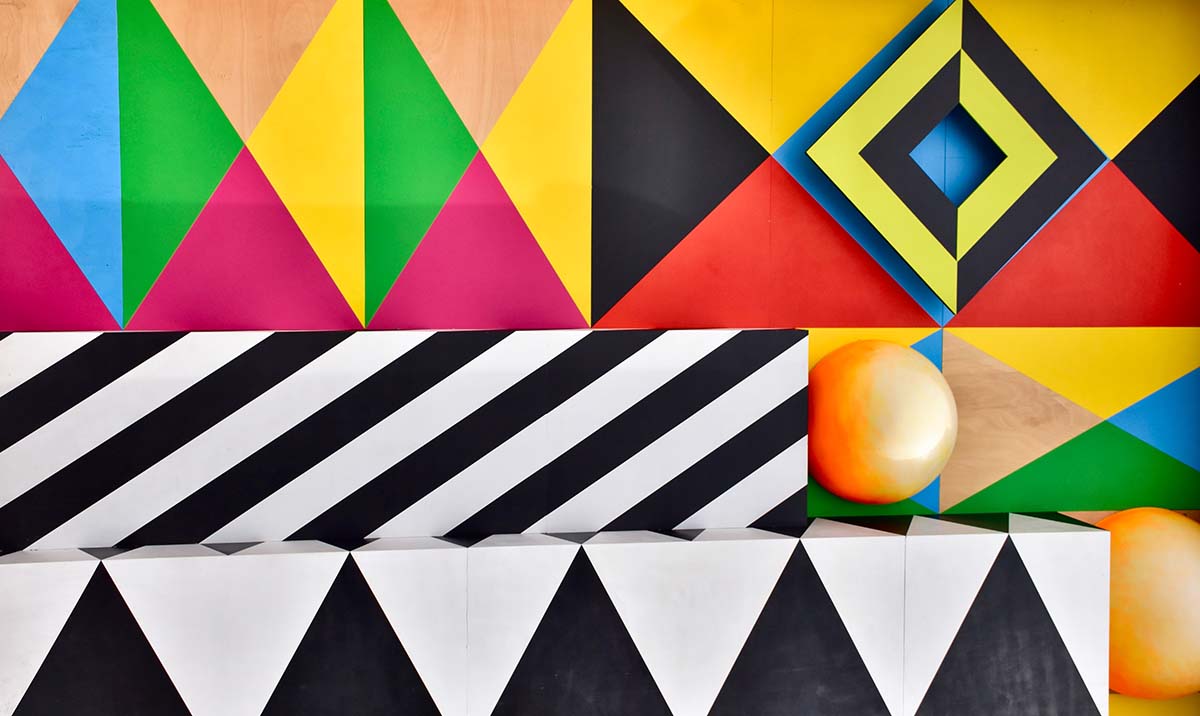
Creating Within Constraints
One of the scariest things you can offer a creative mind is complete and utter freedom. That mind will wander off in any direction and find it hard to focus.
That is why creating with a set framework is powerful. You can take your ideas and channel them into a specific direction, helping you to work out what you should include and what you should exclude in your podcast journey.
Some constraints we all have to deal with, like money or time. If you struggle to find the time to dedicate to your podcast, take a graphic designer’s approach and be creative about the time constraint.
Maybe you shorten your show time. Change your show format. Or come up with a unique story about how you create the show. For example, “I only record when my kids are asleep, and I’ve had one margarita.” There’s nothing quite like a challenge to spark a creative response.
No Room For Ego
The creative process gives your spark and your efforts over to your audience. Graphic designers are not creating something for themselves. Even if it is a passion project with no client involved. They’re creating this piece of art for their audience to consume. Everything they work on goes toward inspiring, motivating, or helping others solve a problem.
This means that you should be thinking about who is listening to your podcast through every step of its creation. Take some time to put yourself in the shoes of your audience and understand what problems they may be facing.
Empathy without ego factors into the creative process for designers and podcasters.
Think About The Experience
Thinking about the experience also focuses on your listener.
Designers will often think about the experience of viewing their work and what that will evoke. As a podcast creator, you are equally responsible for evoking an emotion and creating an experience for your audience.
It’s really important to consider this aspect because many works of art — design or audio — are aimed at a specific emotion. And while you can’t always be sure what your audience will experience, you certainly will not know if you create without an intention.
Try to open your mind to see where your podcast episode could take your audience emotionally and what possibilities other than the intended ones could occur.
Could I trigger shame? Could I trigger anger? What about joy? Or a sense that this host “gets me?”
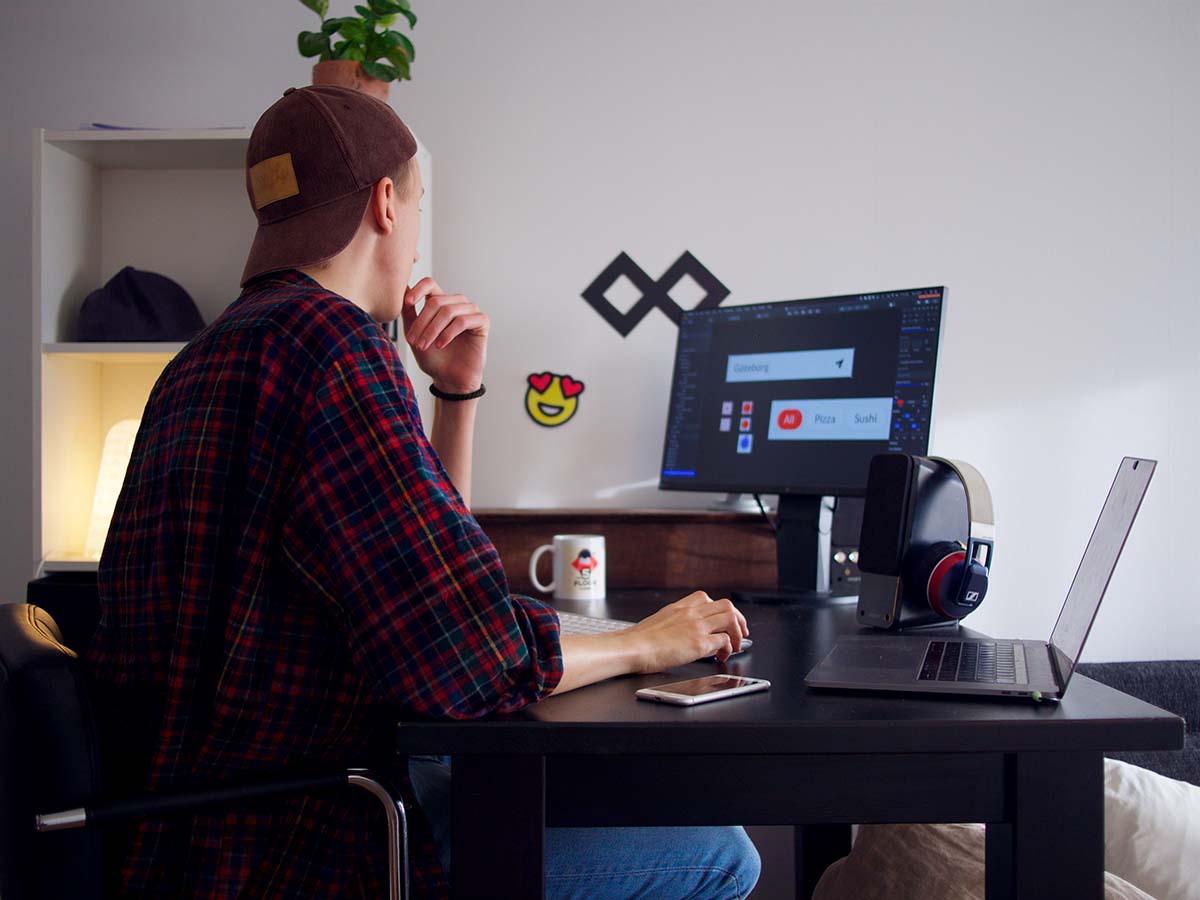
Ideas Are More Important Than Tools And Tech
Yes, creating a podcast needs certain tools in order for you to go live. A microphone and a platform for hosting are essential.
However, the lesson you can take away from a graphic designer is not to get bogged down with making sure you have the latest and best tools for the job.
You don’t need the most expensive microphone, a complete sound studio, top-notch editing software, and all the other trimmings to make a great podcast that people will notice.
What you really need is a good idea executed well.
This means having a focus for your podcast in general. Having a plan for the message you want to get across. It also means that you need to become a better storyteller, so people know what you’re saying even if the tools you’re using aren’t the best.
A good graphic designer can tell a story with a pencil and a napkin. Or a stick in the sand.
Can you tell a story with just your smartphone for a microphone, and a free audio app to edit the recording?
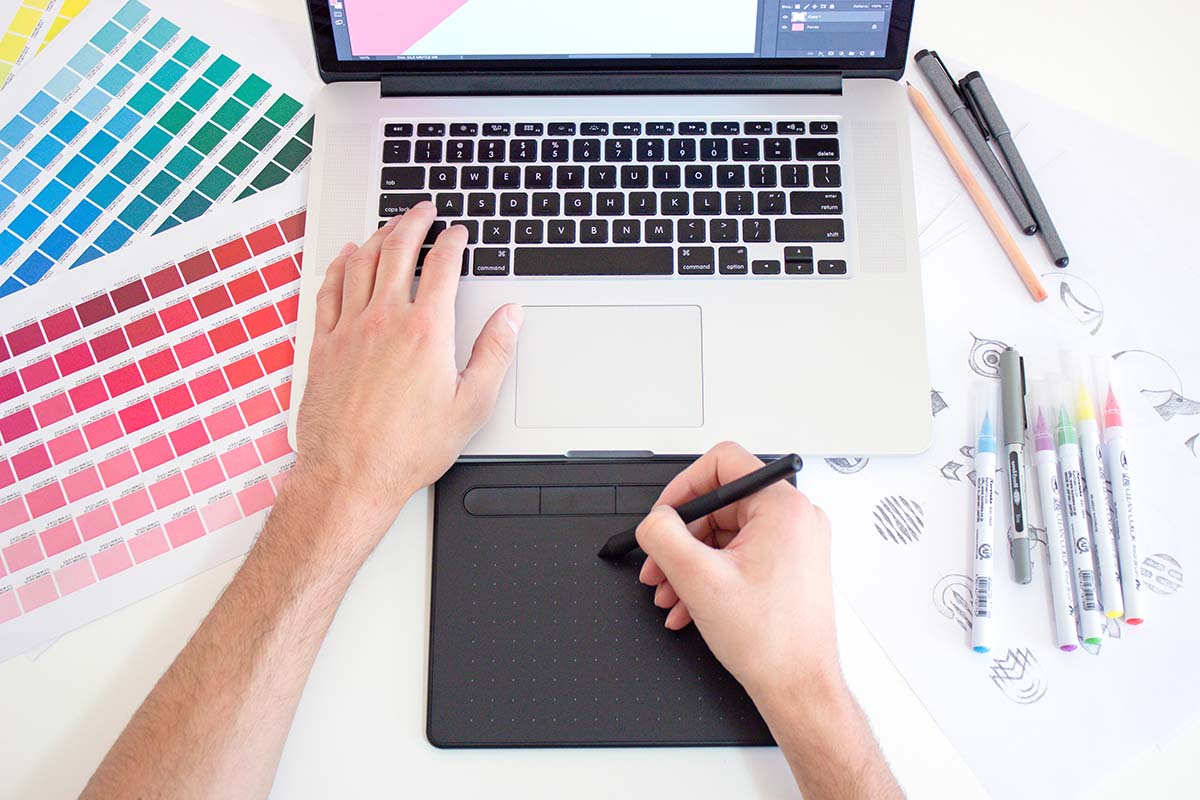
Set Your Intentions
Graphic designers don’t just randomly add things to their image with the hope that it will look nice. They start with a plan, working out what to say, and then carefully selecting and placing each element to tell that story.
When you see a strong design in print and it evokes emotion, that didn’t happen accidentally. A good podcast that does the same will not happen accidentally, either.
Can you succinctly describe what your intended purpose is for your podcast or an episode?
Each episode or segment should further that overall goal, while also having its own individual goal. When you make an effort to carefully plan each episode within a series and each segment within an episode, you can achieve more impact with your podcast.
Learn The Fundamentals So You Can Break The Rules
A proper graphic designer will probably have done some form of studying to shape her natural talents into something stronger.
Designers learn things like the Rule of Thirds, the Golden Ratio, Color Theory, and more. These fundamental design principles form the foundations of what they do every day. However, they also know breaking them will have a strong impact.
As a podcaster, you should learn a few foundational elements too. For example, voice and breath control enhances your ability to speak well when recorded. Techniques for interviewing people and for engaging with an audience you can’t see are also essential.
Then there are the technical aspects, such as how to use a microphone and a pop filter, how to edit sound clips, and maybe even how to layer in extras like sound effects and music.
Once you know how to do the fundamentals, you can learn when it’s a good time to break the rules to get a specific reaction from your audience.
For example, maybe you purposely record a segment on a poor quality microphone without any edits because it speaks to the raw, live nature of the situation to evoke more emotional impact.
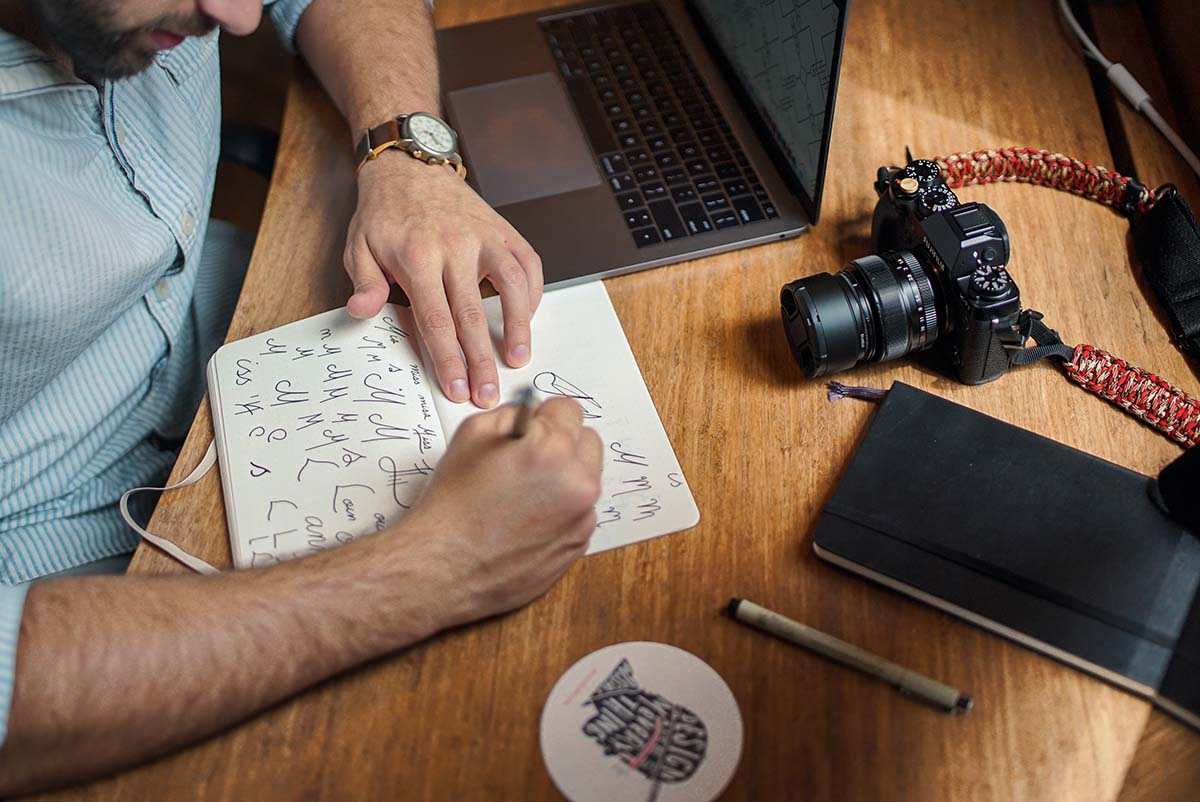
Conclusion
As you draw parallels between graphic design and podcasting, you start to see they can apply to greater areas of your life as well. Design your graphics, your audio, and your life with intention, within constraints, without your ego, focused on others, and you will quickly learn what works and what does not. Find better ideas, learn, and grow in your storytelling skills.
And while you’re at it, use Wavve to design beautiful visuals to share your best moments of your podcast, show, audiobook, speech, or new music track on social media. Your audience will thank you for making your audio masterpieces much more accessible, easier to check out, and easier to understand what kind of work they can expect from you.

Ninja craftsman, devoted freelance writer and loving wife, Lauren co-owns How To Heat Press with her husband, Kevin. In middle school, she found her passion for iron-ons and heat transfer. She’s always enjoyed putting her own creative twist on the actual objects in her life.
